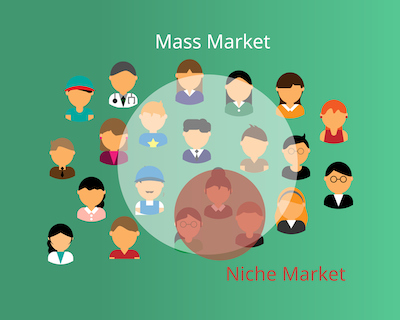For better or for worse, the Internet allows the like-minded to come together, share their passions and find exactly what they want at any time. Boxed wine moms who love to upcycle? Check. Cottagecore stans raising chickens? Check. Vaccinated Boomers loving van life? Check.
Marketers who truly know their audience—and their interests—have a leg up on those that target only based on behavior. That's because contextual targeting offers advertisers the chance to speak to consumers not only in places that are directly relevant to their product, but also to uncover buys that they wouldn't have otherwise found.
Here are a few tips on using contextual targeting to find your people.
You can start broad and zero in
Perhaps you haven't quite nailed your niche audiences yet. Maybe you're running a brand awareness campaign and have to cast a wide net. Either way, contextual targeting can help you uncover new, fertile ground for ad placements.
Consider this: you're a car brand promoting your new luxury sedan, so you've decided to target high earners in contexts relevant to personal finance and investments. What you find, however, is that your ads are performing well in contexts that overlap with particular sports like golf, fishing, retirement planning and healthy eating. Those metrics might well add up to a niche audience: high earners between 55 and 66 years old who are health-conscious and interested in leisure sports.
Contextual targeting helps niche scale
Once you have a niche in mind, its important to look beyond the obvious direct deals that play to their interests. Sure, you could advertise in Golf Digest, and you probably should. But a programmatic buy enables you to expand your reach beyond their pages. There's a world of content that might reach this niche in all corners of the web, and by using contextual targeting you're sure to get relevant placement in premium magazines as well as smaller sites with hyper-engaged audiences.
Use niche creative closer to purchase
Evergreen ads are essential when targeting a broad audience, but when targeting niche audiences, you should boost engagement with creative that speaks directly to them. Well-to-do young Boomers in the twilight of their careers may respond better to ads near retirement content that suggest their new car is well-earned. Golf enthusiasts might respond more to extra trunk space when it's shown with clubs and cleats next to PGA coverage. These creative executions drive the most engagement closer to the bottom of the funnel, and should be layered in with intent data to produce the best outcome.
Mind the cap
Advertisers always have to consider an audience's size when planning a buy. But when advertising to a niche audience, the size of that consumer pool should dictate your frequency cap. There's no hard and fast rule on this--some brand's niche audiences are bigger than others' general audience--so work with your programmatic expert to set caps that ensure no one is overwhelmed.





